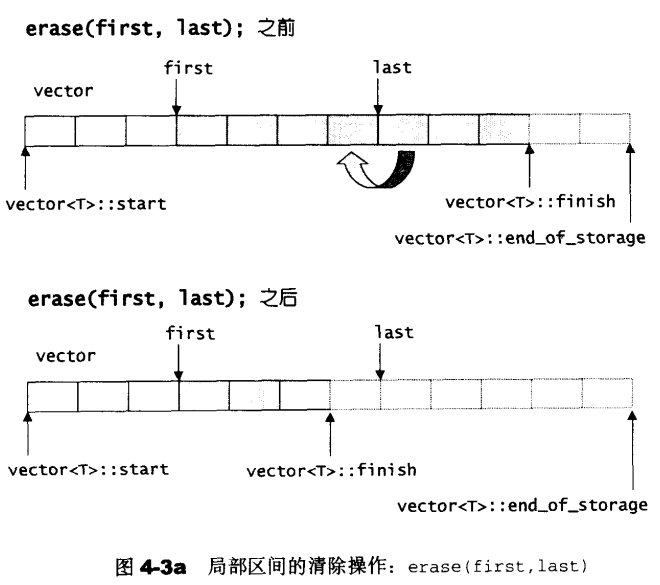vector.erase();vector.clear();map.erase();
vector::erase() 返回被删除元素下一个位置的迭代器 iter:

STL中的源码:
//清除[first, last)中的所有元素 iterator erase(iterator first, iterator last) { iterator i = copy(last, finish, first); //[last, finish)拷贝到first destroy(i, finish); finish = finish - (last - first); return first; } //清除某个位置上的元素 iterator erase(iterator position) { if(position + 1 != end()) copy(position + 1, finish, position); --finish; destroy(finish); return position; }
用法:
for(vector<int>::iterator it = vecInt.begin(); it != vecInt.end();) { if(*it == 0) { it = vecInt.erase(it); } else { it++; } }
map::erase() 返回值为 void
(1) void erase (iterator position) { t.erase(position); } (2) size_type erase (const key_type& x) { return t.erase(x); } (3) void erase (iterator first, iterator last) { t.erase(first, last); }

用法:
for(map<int,int>::iterator it = mapInt.begin(); it != mapInt.end();) { if(it->second == 0) { mapInt.erase(it++); } else { it++; } }
vector.clear()
vector中存储了对象的指针,调用clear后,并不会调用这些指针所指对象析构函数,因此要在clear之前调用delete;
如果vector存储的是对象,调用clear后,自建类型的对象(int之类的)直接删除,若是外部类型,则调用析构函数。
看个vector内存分配的例子:
class Test
{
public:
Test(int x1): x(x1) { cout << "Test cons" << x << endl; }
~Test() { cout << "Test des" << x << endl; }
int x;
};
int main()
{
vector<Test> vec;
Test* p1 = new Test(1);
Test* p2 = new Test(2);
Test* p3 = new Test(3);
vec.push_back(*p1);
vec.push_back(*p2);
vec.push_back(*p3);
vec.clear();
system("pause");
return 0;
}
输出:

这里析构了6次,原因是vector的容量永远是大于或者等于size。而当内存不够的时候,会重新allocate新的内存,拷贝数据,deallocate当前内存,;
这里内存变化是1->2->4,所以析构次数是1+2+3=6次。





 浙公网安备 33010602011771号
浙公网安备 33010602011771号